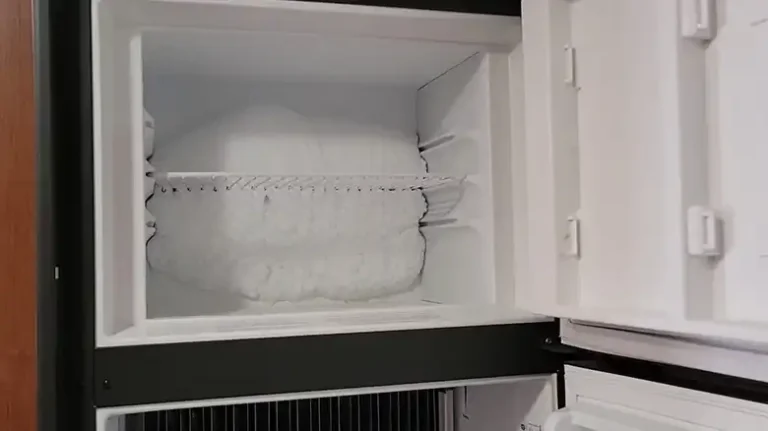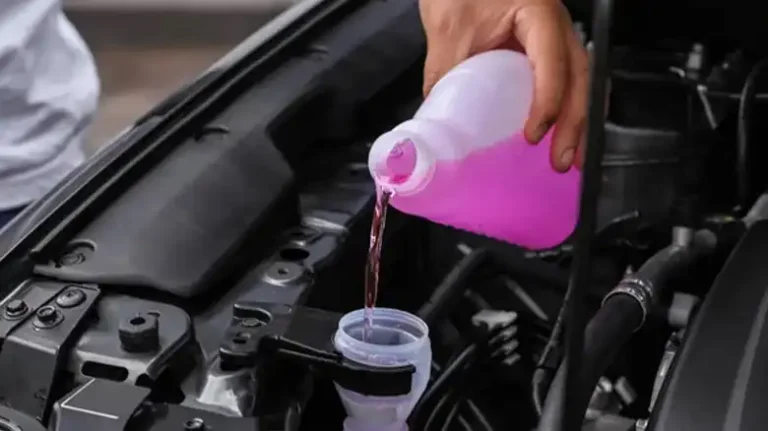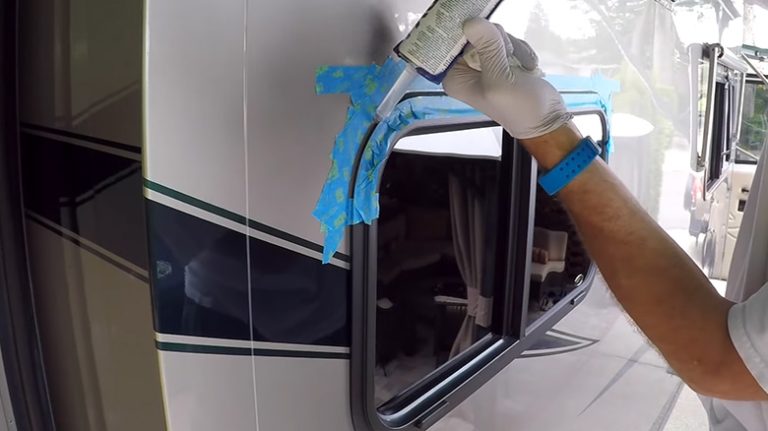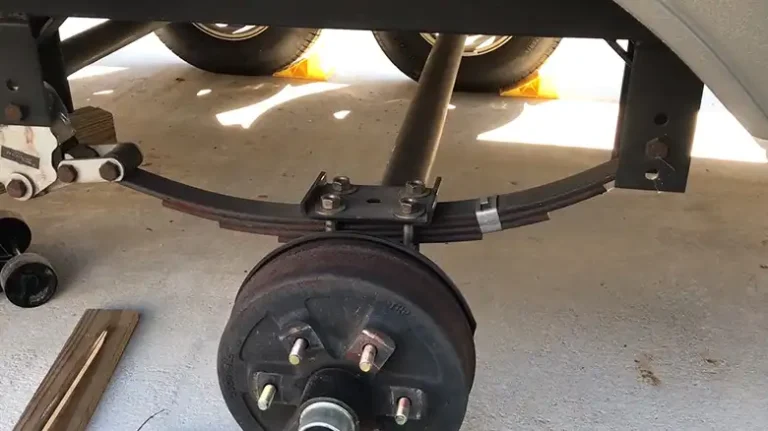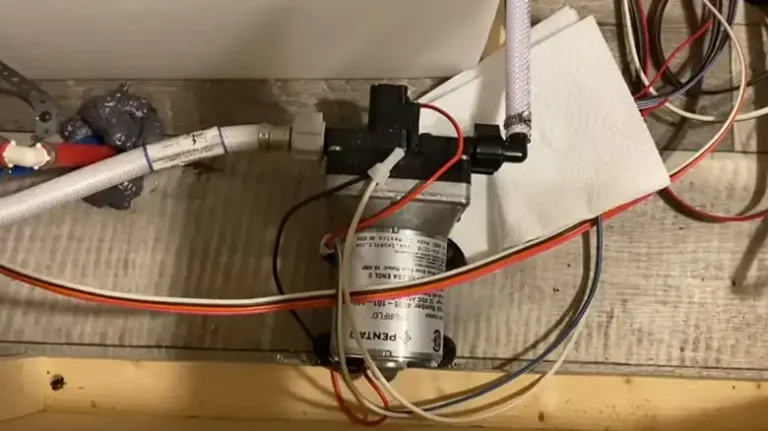How to Clean Solar Panels on RV Roofs?
Solar panels are a great way to power your RV with clean and renewable energy. They can reduce your dependence on fossil fuels, save you money on electricity bills, and extend the life of your batteries. But to enjoy these benefits, you need to keep your solar panels clean and well-maintained.
Cleaning your RV solar panels is essential for maintaining their efficiency and performance. Dirt, dust, pollen, bird droppings, tree sap, and other debris can accumulate on the surface of your panels, blocking the sunlight and reducing the amount of energy they can produce. According to some studies, dirty solar panels can lose up to 25% of their output compared to clean ones.
Cleaning the panels also helps them last longer and prevent potential damage. Start by sweeping debris gently with a soft brush. Spray panels with cool water and mild soap. Let soak then scrub stains gently with a cloth or sponge. Avoid scratching. Rinse away soap with fresh water from top to bottom. Wipe off droplets with a squeegee. Inspect closely when dry. Redo missed areas.
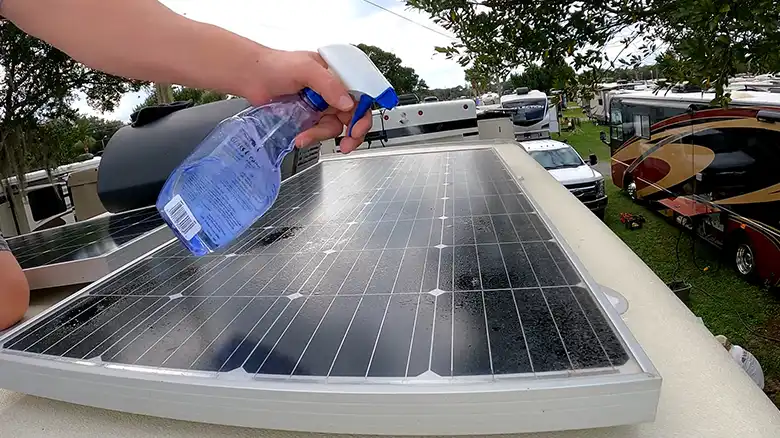
How Can Dirty Solar Panels Affect?
Dirty solar panels can have a negative impact on your energy output and cost you money in the long run.
Reduced efficiency: Dirty solar panels can block the sunlight and reduce the amount of photons that reach the solar cells, which are responsible for converting light into electricity. This can lower the efficiency and performance of your panels, and decrease the amount of energy they can produce. According to some studies, dirty solar panels can lose up to 25% of their output compared to clean ones.
Increased wear and tear: Dirty solar panels can also cause more wear and tear on your panels, and affect their durability and functionality. Dirt and debris can cause scratches, cracks, corrosion, and hot spots on your panels, which can reduce their lifespan and increase the risk of malfunction or failure. By keeping your panels clean, you can prevent these damages and extend their lifespan.
Higher electricity bills: Dirty solar panels can also cost you money in terms of higher electricity bills. If your panels produce less energy than you need, you may have to rely more on your batteries, generator, or grid power, which can increase your expenses and carbon footprint. By keeping your panels clean, you can maximize your energy production and minimize your energy consumption, which can save you money and help the environment.
Preparing for Cleaning
Before you start cleaning your RV solar panels, you need to prepare some equipment, choose the right weather, and secure your access to the roof. Here are some steps to follow –
Gathering Equipment
You will need some basic equipment to clean your RV solar panels, such as –
Soft sponges: You will need some soft sponges to apply the cleaning solution and wipe the surface of your panels. You should avoid using hard or abrasive sponges, as they can scratch or damage your panels. You should also use separate sponges for different areas of your panels, and rinse them frequently to avoid spreading dirt or debris.
Microfiber cloths: You will need some microfiber cloths to dry and polish your panels after rinsing them. You should avoid using cotton or paper towels, as they can leave lint or residue on your panels. You should also use clean and dry cloths for each panel, and change them often to avoid streaks or smudges.
Long-handled tools: You will need some long-handled tools, such as brushes, brooms, sponges, or squeegees, to reach and clean the hard-to-access areas of your panels, such as the edges or corners. You should use soft-bristled or rubber-tipped tools, as they can prevent scratches or damage to your panels. You should also use adjustable or telescopic tools, as they can allow you to adjust the length and angle of the handle according to your needs.
Hose: You will need a hose to rinse your panels with fresh water after applying the cleaning solution. You should use a hose with a spray nozzle, as it can allow you to control the water pressure and direction. You should also use a hose that is long enough to reach all your panels and check for any leaks or kinks before using it.
Gentle cleaning solution: You will need a gentle cleaning solution to dissolve and remove the dirt and debris from your panels. You should avoid using harsh or abrasive chemicals, such as bleach, ammonia, alcohol, or vinegar, as they can damage or discolor your panels. You should also avoid using soap or detergent that contains additives, such as fragrances, dyes, or foaming agents, as they can leave a film or residue on your panels. You should use a mild dish soap or an RV-specific cleaner that is designed for solar panels, and dilute it with water according to the instructions. You can also use some DIY recipes, such as baking soda, lemon juice, or hydrogen peroxide, as they are natural and environmentally friendly options.
Choosing the Right Weather
You should choose the right weather to clean your RV solar panels, as it can affect the quality and safety of your cleaning. You should avoid cleaning your panels in direct sunlight or extreme heat, as this can damage your panels and expose you to harmful UV rays. You should also avoid cleaning your panels in strong wind or rain, as this can make your cleaning difficult and dangerous. You should clean your panels in cool, shady, and calm conditions, preferably in the early morning or late afternoon, when the sun is low and the temperature is mild.
Securing Access
You should secure your access to the roof of your RV, as it can ensure your safety and convenience while cleaning your panels. You should use a sturdy and stable ladder to access the roof of your RV, and make sure it is properly secured and positioned. You should also check the roof of your RV for any damage, cracks, or weak spots, and avoid stepping on them. If your RV has a roof hatch, you can use it to access the roof, but make sure it is large enough and safe to use. You should also wear a safety harness or a fall arrest system if you have to work on a high or steep roof and make sure it is properly attached and adjusted. You should also wear non-slip shoes or boots, and avoid walking on the edges or corners of the roof. You should also be aware of your surroundings and avoid any obstacles or hazards that could cause you to trip or fall.
Step-by-step Procedure for Cleaning RV Solar Panels
Once you have prepared everything, you can start cleaning your RV solar panels using the following technique –
Step 1. Initial Sweep
The first step is to remove any loose dirt, leaves, debris, or snow from your panels using a soft brush or broom. You should start from the top and work your way down, sweeping gently and carefully. You should avoid applying too much pressure or rubbing too hard, as this can scratch or damage your panels. You should also avoid using metal or sharp tools, as they can cause cracks or chips on your panels.
Step 2. Soapy Rinse
The next step is to apply a gentle cleaning solution to your panels using a spray bottle or a long-handled sponge. You should use a mild dish soap or an RV-specific cleaner that is designed for solar panels, and dilute it with water according to the instructions. You can also use some DIY recipes, such as baking soda, lemon juice, or hydrogen peroxide, as they are natural and environmentally friendly options. You should spray or sponge the solution evenly and generously over your panels, covering the entire surface. You should let the solution sit for a few minutes to loosen and dissolve the dirt and debris.
Step 3. Focused Cleaning
The third step is to address any stubborn stains or spots on your panels using a gentle scrubbing motion. You should use a soft sponge or a microfiber cloth to gently rub the affected areas, applying more pressure as needed. You should avoid using abrasives, such as steel wool, sandpaper, or scouring pads, as they can damage or discolor your panels. You should also avoid using circular or diagonal motions, as they can cause swirl marks or scratches on your panels. You should use linear or horizontal motions, following the direction of the solar cells.
Step 4. Final Rinse
The final step is to rinse your panels thoroughly with fresh water using a hose or a bucket. You should use a hose with a spray nozzle, as it can allow you to control the water pressure and direction. You should spray or pour the water from the top to the bottom, rinsing off the cleaning solution and any remaining dirt or debris. You should make sure to remove any soap residue or streaks from your panels, as they can reduce their efficiency and performance.
Advanced Effective Tips
Here are some advanced tips and tricks to make your RV solar panel cleaning easier and more effective –
Cleaning from the Ground
If you want to avoid climbing on the roof of your RV, you can try cleaning your panels from the ground using some special tools, such as –
Telescopic brushes: These are long-handled brushes that can extend and retract to reach different heights and angles. They can help you sweep and rinse your panels without having to climb on the roof. You should use soft-bristled or rubber-tipped brushes, as they can prevent scratches or damage to your panels.
Extendable squeegees: These are long-handled squeegees that can extend and retract to reach different heights and angles. They can help you wipe and dry your panels without having to climb on the roof. You should use rubber-tipped or microfiber squeegees, as they can prevent streaks or smudges on your panels.
Robotic cleaners: These are automated devices that can move and clean your panels without human intervention. They can help you save time and effort, as they can operate on their own or with a remote control. You should use robotic cleaners that are compatible with your panel type and size, and that have sensors and safety features to prevent them from falling or damaging your panels.
Maintaining Clean Panels
If you want to keep your panels clean for longer and reduce the frequency of cleaning, you can try some preventive measures, such as –
Regular visual checks: You should inspect your panels regularly, at least once a month, to check for any dirt, debris, or damage. You should also monitor your panel output, using a solar charge controller or a multimeter, to detect any drops or fluctuations in their performance. If you notice any signs of dirt or damage, you should clean or repair your panels as soon as possible.
Rainwater runoff systems: You can install some rainwater runoff systems, such as gutters, downspouts, or drip edges, to divert the rainwater away from your panels. This can help you prevent the rainwater from pooling or stagnating on your panels, which can cause dirt, algae, or mold to grow on them. You can also use rainwater barrels or tanks to collect and store the rainwater for future use, such as watering your plants or washing your RV.
Protective coatings: You can apply some protective coatings, such as wax, sealant, or film, to your panels to create a barrier against dirt and debris. This can help you reduce the adhesion and accumulation of dirt and debris on your panels, and make them easier to clean. You should use protective coatings that are suitable for your panel type and material, and that do not interfere with their efficiency and performance.
Troubleshooting Common Issues
If you encounter some common issues or challenges while cleaning your RV solar panels, you can try some solutions, such as –
Bird droppings: If your panels are stained by bird droppings, you can try to remove them using a gentle cleaning solution and a soft sponge or cloth. You should soak the droppings with the solution for a few minutes to soften and dissolve them, and then scrub them gently with a sponge or cloth. You should avoid scraping or peeling them off, as this can damage or scratch your panels. You can also try to prevent birds from landing or nesting on your panels, by using some deterrents, such as spikes, nets, or decoys.
Tree sap: If your panels are sticky or glossy from tree sap, you can try to remove it using a gentle cleaning solution and a soft sponge or cloth. You should spray or sponge the solution generously over the sap, and let it sit for a few minutes to loosen and dissolve it. You should then wipe it off gently with the sponge or cloth, and rinse it thoroughly with water. You should avoid using alcohol or acetone, as they can damage or discolor your panels. You can also try to prevent tree sap from falling on your panels, by parking or camping away from trees, or by trimming or pruning the branches that overhang your panels.
Hard water stains: If your panels are cloudy or spot hard water stains, you can try to remove them using a gentle cleaning solution and a soft sponge or cloth. You should use a solution that contains a mild acid, such as lemon juice or vinegar, to neutralize and dissolve the minerals that cause the stains. You should spray or sponge the solution evenly over the stains, and let it sit for a few minutes to react and break them down. You should then wipe them off gently with the sponge or cloth, and rinse them thoroughly with water. You should avoid using hard water to rinse your panels, as this can cause more stains. You should use distilled or filtered water or add some softener or conditioner to your water, to prevent hard water stains.
How Often Do You Need to Clean Your RV Solar Panels?
How often you need to clean your RV solar panels depends on several factors, such as the climate, the environment, and your travel patterns. Generally, you should clean your panels at least once every three months, or more frequently if you notice a significant drop in their output or if they look visibly dirty.
Some factors that can increase the frequency of cleaning are –
Climate
If you live or travel in a dry, dusty, or windy area, your panels will get dirty faster than in a humid or rainy area. You may also need to clean your panels more often in the winter when snow, ice, and frost can cover them and reduce their efficiency.
Environment
If you park or camp near trees, plants, birds, insects, or other sources of debris, your panels will get dirty more quickly than in an open or clear area. You may also need to clean your panels more often if you are exposed to air pollution, smoke, or smog, which can leave a thin film of residue on your panels.
Travel Patterns
If you drive or tow your RV frequently, your panels will get dirty faster than if you stay in one place for a long time. The road dust, dirt, and bugs can stick to your panels and affect their performance. You may also need to clean your panels more often if you travel on rough or unpaved roads, which can cause more vibration and movement of your panels.
Be Safe up There While Cleaning Solar Panels
Cleaning your RV solar panels can be a risky task, especially if you have to climb on the roof of your RV. You should always take some safety precautions before, during, and after cleaning your panels, such as –
Stable Access
You should use a sturdy and stable ladder to access the roof of your RV, and make sure it is properly secured and positioned. You should also check the roof of your RV for any damage, cracks, or weak spots, and avoid stepping on them. If your RV has a roof hatch, you can use it to access the roof, but make sure it is large enough and safe to use.
Sun Protection
You should avoid cleaning your panels in direct sunlight or extreme heat, as this can damage your panels and expose you to harmful UV rays. You should also wear appropriate clothing, sunscreen, sunglasses, and a hat to protect yourself from the sun. You should also drink plenty of water and take breaks to avoid dehydration and heatstroke.
Fall Prevention
You should wear a safety harness or a fall arrest system if you have to work on a high or steep roof and make sure it is properly attached and adjusted. You should also wear non-slip shoes or boots, and avoid walking on the edges or corners of the roof. You should also be aware of your surroundings and avoid any obstacles or hazards that could cause you to trip or fall.
Why Isn’t Rainwater Enough to Clean the Solar Panels?
You may think that rainwater alone is enough to clean your solar panels, as it can wash away the dirt and debris from your panels. However, this is not true, as rainwater alone is not enough to clean your solar panels effectively. Here are some reasons why –
Rainwater is not pure: Rainwater is not pure water, as it can contain various impurities, such as dust, pollen, pollution, or acid. These impurities can stick to your panels and form a thin film or layer on them, which can block the sunlight and reduce their efficiency and performance. Rainwater can also cause corrosion or rust on your panels, especially if it is acidic or salty, which can affect their durability and functionality.
Rainwater is not consistent: Rainwater is not consistent, as it can vary in frequency, intensity, and duration. Depending on the weather and the season, you may get more or less rain, or no rain at all, which can affect the cleanliness of your panels. You may also get different types of rain, such as drizzle, shower, or storm, which can have different effects on your panels. For example, a light drizzle may not be enough to rinse your panels, while a heavy storm may damage your panels with hail or debris.
Rainwater is not sufficient: Rainwater is not sufficient, as it can only remove the loose or superficial dirt and debris from your panels, but not the stubborn or ingrained ones. You may still have some stains, spots, or residues on your panels, which can affect their appearance and performance. You may also have some dirt or debris that is not exposed to the rain, such as under the frames or mounts of your panels, which can cause problems or issues for your panels.
Therefore, rainwater alone is not enough to clean your solar panels, and you should still clean your panels manually using the proper equipment and technique.
Which Products Are Safe for Cleaning Solar Panels?
When cleaning your solar panels, you should use products that are safe and suitable for your panels, as some products can damage or discolor your panels. Here are some products that are safe for cleaning solar panels –
Mild Dish Soap
Mild dish soap is a safe and effective product for cleaning solar panels, as it can dissolve and remove dirt and debris from your panels without harming them. You should use a dish soap that is gentle and biodegradable, and that does not contain any additives, such as fragrances, dyes, or foaming agents, as they can leave a film or residue on your panels. You should also dilute the dish soap with water according to the instructions, and rinse it thoroughly with water after using it.
RV-specific Cleaner
An RV-specific cleaner is a safe and convenient product for cleaning solar panels, as it is specially formulated and tested for RV use. It can remove the dirt and debris from your panels without harming them, and it can also protect them from UV rays, oxidation, and corrosion. You should use an RV-specific cleaner that is compatible with your panel type and material, and that does not contain any harsh or abrasive chemicals, such as bleach, ammonia, or alcohol, as they can damage or discolor your panels. You should also follow the instructions on the label, and rinse it thoroughly with water after using it.
DIY Recipes
DIY recipes are safe and natural products for cleaning solar panels, as they are made from common household ingredients that are harmless and eco-friendly. You can use some DIY recipes, such as baking soda, lemon juice, or hydrogen peroxide, to make your own cleaning solution that can remove dirt and debris from your panels without harming them. You should mix the ingredients with water according to the proportions, and apply and rinse them as you would with any other cleaning solution.
Environmentally Friendly Options
Environmentally friendly options are safe and responsible products for cleaning solar panels, as they are made from organic or renewable materials that are biodegradable and non-toxic. You can use some environmentally friendly options, such as plant-based or enzyme-based cleaners, to clean your panels without harming the environment or your health. You should use environmentally friendly options that are certified or verified by reputable organizations, such as Green Seal or EcoLogo, and that do not contain any harmful or synthetic chemicals, such as phosphates, chlorine, or petroleum.
Final Thought
In the end, it can be said that cleaning your RV solar panels is an important and beneficial task that can improve their efficiency, performance, and lifespan. You should clean your panels regularly, using the proper equipment, technique, and products, and taking the necessary safety precautions. You should also follow some advanced tips and tricks to make your cleaning easier and more effective and to troubleshoot some common issues or challenges. By keeping your panels clean, you can enjoy the advantages of solar power and save money and energy in the long run.
Common Related Questions
How do I know if my RV solar panels need cleaning?
A: You can tell if your RV solar panels need cleaning by looking at them or measuring their output. If your panels look dirty, dusty, or stained, or if their output drops significantly or inconsistently, you should clean them as soon as possible.
How do I clean different types of RV solar panels?
A: You can clean different types of RV solar panels using the same equipment, technique, and products, as they are generally similar and compatible. However, you should pay attention to the specific features and requirements of your panel type, such as the material, shape, size, and wiring, and adjust your cleaning accordingly. The most common types of RV solar panels are monocrystalline, polycrystalline, and amorphous, and you can find more information about them in the RV Solar Panel Types article.
How do I clean different types of RV roof materials?
A: You can clean different types of RV roof materials using the same equipment, technique, and products, as they are generally similar and compatible. However, you should pay attention to the specific features and requirements of your roof material, such as the texture, color, thickness, and coating, and adjust your cleaning accordingly. The most common types of RV roof materials are fiberglass, rubber, and aluminum, and you can find more information about them in the RV Roof Types article.

